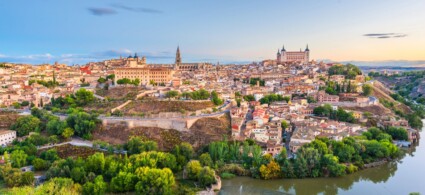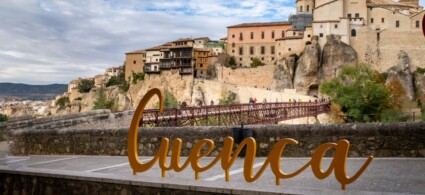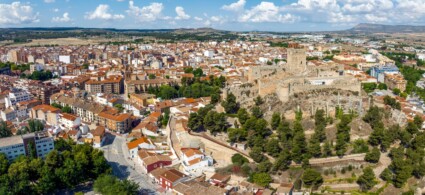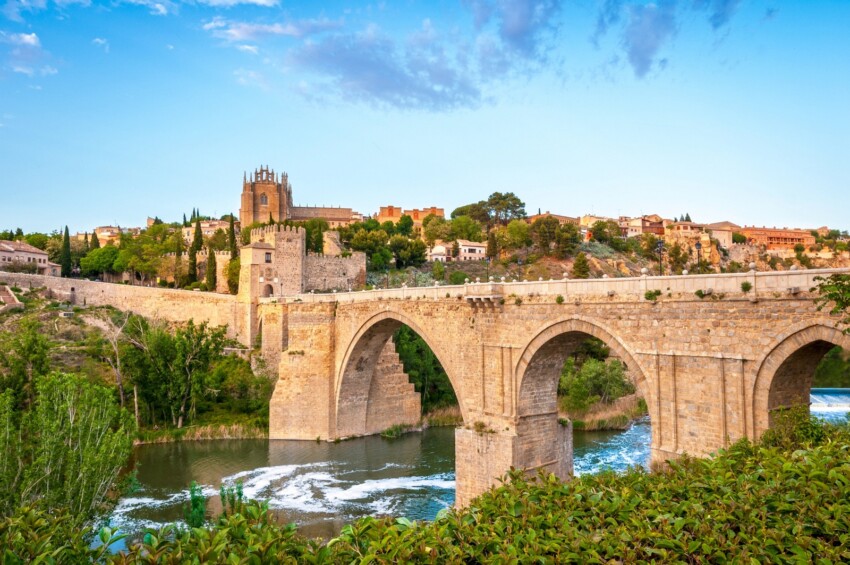

Castile-La Mancha is Spain’s most iconic region. It is the land of Don Quixote, the Spain of literary myth and windmills: a plateau with ochre and henna-red earth, where endless expanses of olive groves and vines, ruined castles and, of course, the solitary windmills that are the emblem of the region.
Although so famous, Castile-La Mancha is one of the least visited regions in Spain – a pity. If you want a unique and unforgettable travel experience, plan your road trip to the heart of one of Europe’s most fascinating countries now. On the sunny roads of Castile-La Mancha you can drive for hours without meeting anyone, heading towards a horizon you will never reach.
At first glance, it may seem like a wasteland, but in reality, it is nature that rules in Castile-La Mancha: this region has an astonishing number of protected natural areas – more than a hundred! – comprising national parks, nature parks, reserves and natural monuments. Of these, the two most fascinating are the Tablas de Daimiel and Cabareños National Parks.
In addition to the literary charms, architectural treasures and natural beauty, there is another good reason to visit Castile-La Mancha: the region is the home of queso manchego, the Spanish cheese whose fame has long since crossed national borders, conquering gourmets from all over the world, and it is one of the world’s most productive wine-growing areas.
Things to do in the land of Don Quixote? Castles and mills, of course, but also many other cultural and scenic attractions.
Here are five places you absolutely must visit; if you have more time, you can add the charming villages of Sigüenza, Atienza, Consuegra and Oropesa.
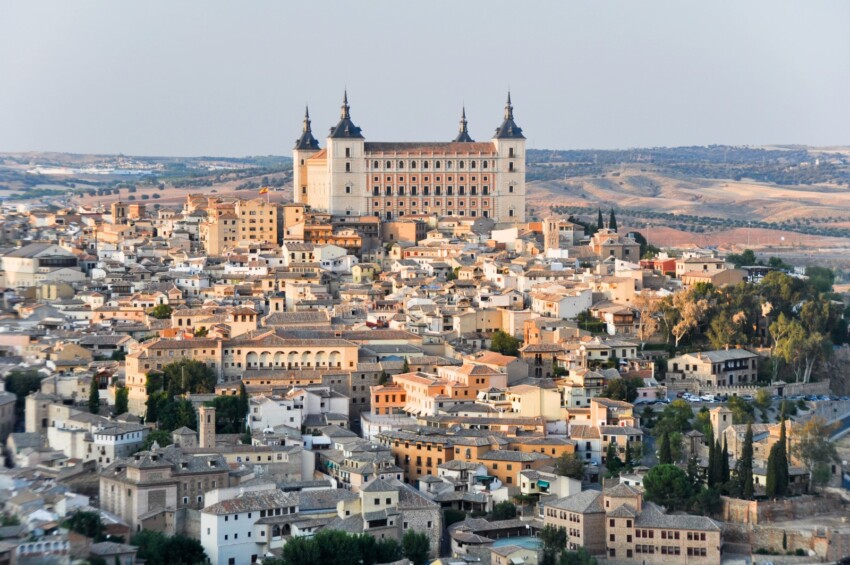
The ancient capital of Spain, Toledo is known as the city of three cultures. Its historic centre, perched atop a hill, is rich in Christian, Arab and Jewish architectural treasures, testimony to the different cultures that have coexisted peacefully in this city for hundreds of years.
Climb to the top of the Arab fortress for a splendid panoramic view of the city, then make a plan of what you want to visit because the number of attractions in Toledo is truly impressive. Don’t miss the Museo del Greco, dedicated to one of the most important European painters of the 17th century who lived here in Toledo.
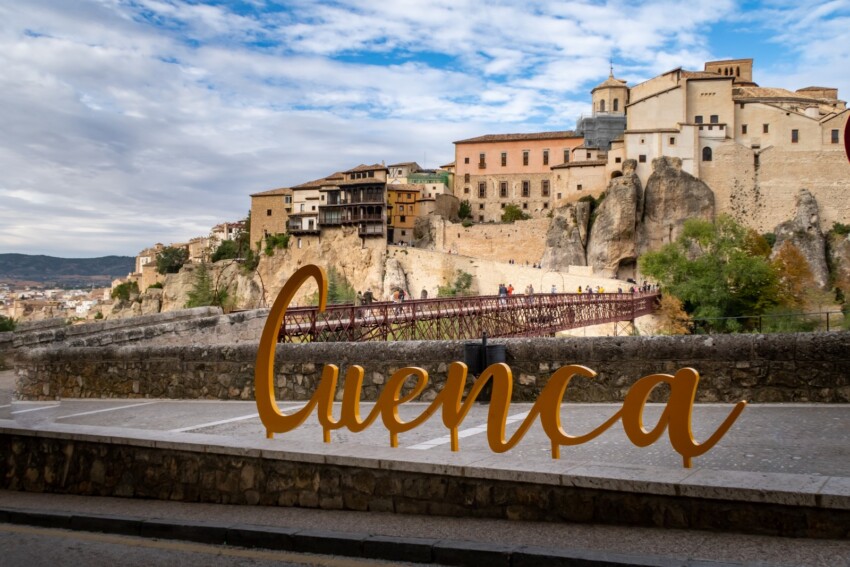
An unmissable stop on any travel itinerary in Central Spain is Cuenca, a unique and picturesque city that seems to be suspended between rocks.
The historic centre of Cuenca stands on a promontory at the junction of two gorges. The historic buildings seem to be one with the rock, and on one of the gorges are a pair of houses with beautiful wooden terraces that have become known as Casas Colgadas (hanging houses) due to their very special position. Admire them from Puente de San Pablo – but only if you don’t suffer from vertigo – and then devote at least half a day to the museums and monuments in the centre.

Another river (Júcar), another (much greener) gorge, another enchanting village straight out of a fairy tale book: if you liked Cuenca, you must also visit Alcalá del Júcar, a town perfectly integrated with the magnificent surrounding landscape.
The top attraction of Alcalá del Júcar is the 15th-century castle, but even more photographed are the houses carved into the mountainside that match the terrain and steep alleyways of the centre. Also worth seeing are a Roman bridge at the foot of the hill and las Cuevas del Diablo, a complex of two caves (Cueva de Garadén and Cueva del Diablo) in the historic centre used in the past as a refuge, warehouse, workshop and even a dovecote.

One of the most important cities in Castile-La Mancha is the lively Albacete, strategically located for connections between the north and south of the country. Many tourists only visit it in passing, travelling from Madrid to the beaches of Andalusia, but if you want to experience Spain outside the usual tourist routes Albacete is a great destination.
Take advantage of the low prices of hotels and restaurants to spend a relaxing day admiring interesting Gothic, Renaissance, Baroque and Mudejar buildings and mingle with the locals for a tapas and cerveza stop.

A must for all theatre lovers, Almagro is an original destination that also deserves to be included in a trip to central Spain by those who want to see a more authentic Spain.
Almagro’s fame as a city of performing arts is due to its two main attractions. Not to be missed is the Court of Comedies, a theatre with a perfectly preserved original 17th century structure that is still used today for performances and festivals. If you are a fan, also visit the National Theatre Museum: a magnificent museum tracing the history of theatre in Spain from its Greco-Roman origins to the avant-garde of the 20th century.
After your cultural visits, join the locals for a beer or a glass of good wine in the bars of the lively Plaza Mayor.
In the following map you can see the location of the main places of interest mentioned in this article.
Castile La Mancha is the third largest region in Spain, after Castile y León and Andalusia. It occupies about 15% of the country’s territory, so choosing where to stay is a move that needs to be carefully planned. For example, we recommend sleeping in Albacete if you want to enjoy the south-eastern part of the region, which stretches as far as the border with the Comunidad Valenciana. Alternatively, in the north there is beautiful Cuenca, which could prove to be a nice surprise.
And finally, why not sleep in Toledo? You can enjoy this beautiful town at unusual times for day trippers from Madrid: early in the morning and late at night the city empties of day-trippers and the atmosphere it provides is truly unique. Stay in the historic centre and enjoy a flat, to experience the city like the locals, or choose a hotel to be pampered and surrounded by services and attention.
Castile La Mancha is a large area of Spain that roughly coincides with the central-southern part of the country, stretching from Madrid to the coast of Valencia. And it is precisely these two cities that are the most convenient starting points, as their international airports are well connected to major European cities. Once you land, rent a car and in less than an hour you will arrive in the interior of the region.
Unfortunately, you will not be able to use Ciudad Real airport, as it is very small and there are no international connections.
The region of Castile-La Mancha is the heart of Spain: it is located right in the centre of central Spain, surrounded by seven other Spanish regions: it borders the regions of Castile-León and Madrid to the north, Extremadura to the west, Aragon and the Valencian Community to the east, Murcia and Andalusia to the south. It is landlocked: the nearest beaches are over 300 km away.
It has five provinces: Toledo, Albacete, Guadalajara, Ciudad Real and Cuenca.
The climate in Castile-La Mancha is Mediterranean-continental, with a considerable difference in temperature between the winter, which is cold (around 0°), and the summer, which is hot (over 30°). Rainfall is very low.
